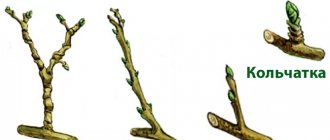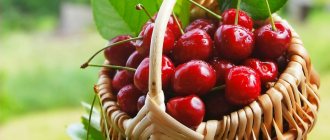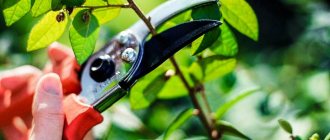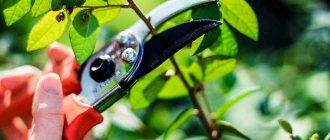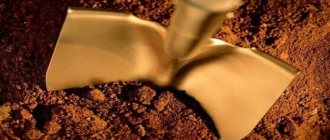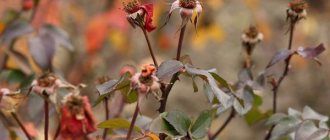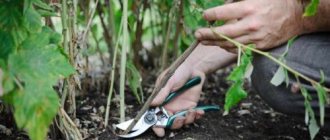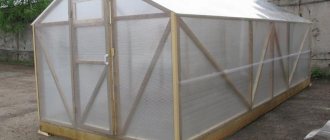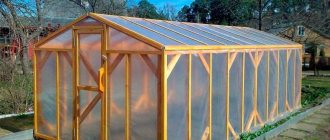Preparing tools
To prune an apple tree, we need a few basic tools:
- Hand pruners – 95% of apple tree pruning will be done with hand pruners.
- Lopper – For larger branches or limbs on more mature trees, you will need a lopper. Since this tool is used much less frequently than a hand pruner, we do not recommend purchasing a professional tool. For a home garden, a basic lopper will suffice.
- Pruning Saw - Although there are specialized pruning saws, cutting is so rare in the home garden that any hand saw will suffice to cut a branch if necessary.
Don't spread disease - clean your tools!
Cleaning your tools won't take much time, but it will help prevent any potential problems. Wash your pruning shears with hot water and soap. This way, you will reduce the risk of disease spreading in your garden.
Who knows which pruner was last used! After cleaning your pruning shears, apply a light oil to the blades for a smooth cut in the garden.
Slices
When pruning your apple tree, make sure you cut in the correct position. When removing a branch, always cut it just past the end of the branch collar, as shown in the apple tree pruning photo.
A branch collar is a ring of woody plant tissue at the junction of an apple tree branch and the trunk. Make sure your cut is on the branch you want to remove and not the parent branch.
- Cuts are made to reduce the height or length of a branch. When you make these cuts, the next bud on the branch will grow significantly and become a leader in the coming growing season.
- We can take advantage of this by cutting in front of the bud that faces in the direction we want the branch to grow. We usually cut just before a bud facing outwards or downwards as this will encourage the tree to grow outwards.
Recommended timing
When pruning an apple tree in the fall, follow two rules:
- Begin pruning before the leaves fall completely.
- Finish before the first frost.
It is also very important to consider the regions in which the trees grow. For example, to grow apple trees in the Urals, late varieties of apple trees are needed, which are considered frost-resistant, since the climate there is harsh and cold. Choose locally bred varieties, as they are already adapted to a specific climate. In the Moscow region, the tree pruning scheme is standard, it begins with the formation of the tree crown and the varieties that should be pruned in the fall are planted - dwarf and columnar apple trees.
When to prune apple trees
All of the major pruning work needs to be done while the tree is dormant, which means winter pruning of apple trees is the best way to go. Remember that we don't want to put unnecessary stress on the tree by pruning it early in winter, which could expose it to extreme cold in some regions.
Prune after the coldest part of winter has passed. In northern climates this usually means late February or early March. You don't have to wait long for the buds to begin to swell!
Pruning apple trees after buds have begun to develop will stress the tree and prevent it from growing properly.
Minor summer pruning of an apple tree can only be done to remove water shoots (small branches that decide to grow STRAIGHT UP) or shoots at the base of the tree. Make sure pruning is relatively minimal.
If you remove too much foliage or branches, the tree will not have enough energy to ripen the fruit. Excessive summer pruning will also make them more susceptible to cold later in life.
Methods for cutting shoots and branches
There are the following methods for pruning apple tree branches:
- on the ring;
- on the kidney;
- stepped (for large branches).
On the ring
At the base of the branches, a ring-shaped influx of bark is clearly visible, consisting of active tissues that can relatively quickly close the wound with new bark. When the branch is completely removed, the so-called “ring” pruning is carried out to the ring.
How to make a cut correctly:
- The branch is cut exactly along the top of this annular bead at a slight angle.
- You cannot cut off the ring by going deep into the wood, as this will remove the most active bark tissue and the wound will take longer to heal.
- You cannot leave a stump above the ring, otherwise the tree will not be able to cover the wound with bark or will take a long time to overgrow, and the wood may begin to rot at the cut site if the branch is large.
On the kidney
The method is used when shortening annual shoots during crown formation. Correct pruning for a bud is done like this: the cut is made above the bud, which “looks” outside the crown so that the shoot growing from it does not thicken the tree. Some gardeners prune to the inner bud; this leads to thickening of the crown and worsens the air and light conditions of the tree.
Scheme. The figure shows: the inner bud “looks” into the crown and the outer bud “looks” out from the crown.
Stepped
It is used when you need to cut down a large, heavy branch. To prevent the branch from breaking off when cutting, creating a large wound on the trunk, it is sawed in several stages:
- First, an incision is made at a distance of several centimeters from the ring, with a depth of about a third of the thickness of the branch.
- Then an incision is made at the top of the branch at a distance from the ring a little further from the bottom cut. As a result, the branch is cut without breaking or injury.
- The remaining stump is cut into a ring with a hacksaw. Cutting a large branch creates a large wound; it needs to be treated with garden varnish.
Tree cutting
This is the most difficult stage when pruning apple trees! No one wants to cut branches off their brand new tree, but trust me, you will be rewarded in the long run.
In the new tree we will focus on several areas:
- Barrel cleaning. Remove all side branches from a height of 60-70 cm from the ground. You may want to go a little higher depending on your yard, other trees, and the aesthetic you're looking for.
- Removal of high perineal angles. Remove any branches from the trunk that extend at a high crotch angle greater than 45 degrees. Over time, the bark of these branches grows into the bark of the trunk, creating a weak “fold.” Although the tree may look great, eventually that branch will be loaded with apples and then crack! The branch breaks and you have lost all those years of growth. Remove any branches with a high crotch angle.
- "Set of branches." Leave some space on the trunk, about 50cm between sets of branches. As the tree grows, you clear the trunk between the first and second set of branches. If you don't do this, you'll end up with a tree that is too bushy to be useful - remember, sunlight and air flow are essential to a healthy apple tree!
- Other cuts. In addition to the cuts above, you will also need to remove any branches that grow straight up, suckers growing around the base of the tree, and any wood that grows downward.
Teenage apple tree
We're not talking about a tree that's 13-19 years old, we're talking about the equivalent of an apple tree that's about 3-5 years old. The tree is starting to take shape, you can see what it will look like as an adult.
This “teenage” tree has no branches at the base; its main branches are formed on at least 2-3 whorls. The tree is probably 2-3 m tall. No branches with high crotch angles. You've laid the perfect foundation for a tree that can produce apples for a lifetime! In the coming years you will see this tree simply growing.
Research results
According to studies conducted in experimental plantings of VNIISPK, with the help of regular pruning, systematic rejuvenation and replacement of overgrowing branches, it is possible to maintain the compact size of the tree with a predominance in the crown of fruit branches no older than 4-5 years, on which the main fruiting is concentrated. The conclusions of experts were made based on a study of the following varieties: “Sinap Orlovsky”, “Northern Sinap”, “Uelsi”, “Orlik”, “Orlovskoe Polosatoe”, “Veteran”.
Annual crown care helps increase the yield and size of apples
Measures such as reducing tree height, limiting crown width and thinning affected both productivity and apple quality. An increase in the average weight of fruits and the number of large ones was noted, which is especially important when growing apple trees with small fruits, such as “Northern Sinap”, “Orlik” and “Veteran”.
Fruit thinning
We usually think about pruning apple trees in the context of the tree. However, fruit thinning is important for tree health and quality fruit production.
It seems strange that there is such a thing as “too many apples!” Pruning apple trees is important, but believe it or not, too much fruit can stunt the tree's growth or even break branches.
- Right before summer, when you prune your apple trees, look at how many young fruits you have on your apple tree.
- Around June, most apple trees drop some fruit that does not develop naturally.
- Thinning the fruit from year to year evens out the fruit yield. Most fruit trees, including peaches and plums, typically produce a high yield one year and a light harvest the next.
- This is inconvenient for home gardeners. Pruning apple trees and properly thinning the fruit will take care of irregular fruiting.
Common mistakes
- Too many branches are being cut at once.
Any pruning still causes damage to apple trees. There is no need to cut down all problematic branches at once if there are many of them. It’s better to stretch the procedure over several seasons. - Too much sawing of young trees.
On young apple trees, remove very few branches. - Sections are not processed.
To avoid introducing infection inside the tree, treat the cuts. - The procedure is carried out after rain or at sub-zero temperatures.
Cut down the shoots in dry weather so that the cuts are smooth and neat. Pruning must be done before frost.
Pruning mature apple trees
Now that we have the basic shape of our tree established, we go into maintenance mode for the rest of that tree's life. Again, nothing new - we prune apple trees for light and ventilation.
During this stage of the apple tree's life, you will also see other things begin to happen. You may have diseased branches that need to be removed. If there have been particularly many apples in season, you may have a branch that has cracked or broken. And if your tree starts to get old you'll see branches start to die back, especially if they don't get much sunlight penetration.
Review the following list in order to ensure you are making the right decisions and cuts when caring for a mature apple tree.
These tips are also suitable for caring for and pruning columnar apple trees.
- Dead wood. Remove all dead wood from the tree. A dead tree is obvious if the bark falls off or the branch turns black. But if you're not sure, you can scrape your fingernail along the bark of the young wood. Healthy wood should have a green cambium layer. If it's all brown, it's unhealthy and should probably be removed!
- Sick branches. Remove any branches that show signs of disease, such as fire blight. Remove anything that looks cluttered or out of place.
- Damaged wood. Remove any cracked or damaged branches. Position the cut to completely remove damaged wood, but still take advantage of growth lower down the branch.
- Branches growing inward. The branches should extend away from the tree. Sometimes a branch decides to clutter the center of the tree. Remove any of these branches.
- Overlapping branches. If two branches grow on top of each other so that they almost touch, cut off the larger one.
- Straight up. Remove any wood that grows upright. Small shoots that grow from old cuttings or along the main part of a large branch are called "spouts." These unproductive branches don't have buds - they just block the light and need to be removed!
- Straight down. Any wood growing below horizontal should be removed from the tree.
- Form and balance. Move away from the tree. Think about its overall shape and how you want it to look. Is there a particular branch that is dominant on one side of the tree? Make a cut and cut it back to where it can branch into two branches. If you see a branch overcrowding another branch and causing problems in the future, cut it back to a bud, which will redirect growth in a better direction.
Basic principles of crown formation
Proper pruning makes it possible to form the optimal shape of the apple tree crown for specific conditions, ensure better and faster growth of the tree, and increase the yield and quality of apples. Regular pruning encourages trees to bear fruit regularly, produces an adequate amount of fruiting wood and (if necessary) increases the proportion of young shoots. Apple and pear trees have mostly short fruiting shoots.
Tools: pruning shears, loppers, garden saw
However, not everyone knows how to prune apple trees. Below are some rules for pruning apple trees that you should definitely pay attention to:
- We get rid of unnecessary branches. First remove branches growing at sharp angles; they break faster under the weight of the fruit.
- Trim branches that unnecessarily shade others, cross, or fall on neighboring branches.
- Remove branches that compete with the center and side conductors.
- When forming the crown of an apple tree, you need to get rid of shoots and branches that are diseased or attacked by pests.
- Apple trees, especially vigorous varieties on tall rootstocks, form very tall crowns. Trees with too high a crown should be limited - caring for tall trees is difficult and inconvenient. It is easier to limit trees on low- or medium-growing rootstocks, which must be taken into account when purchasing seedlings.
- With severe pruning, strong shoots begin to appear, protruding vertically upward, which are usually called “tops”. These shoots should be removed every year because they can cause severe compaction and shading of the crown. It is better to remove the “tops” in the summer – the wounds will heal faster.
- It is better to carry out work on dry days so that the wounds dry out faster.
- Branches can only be trimmed with disinfected tools to prevent trees from becoming infected with diseases. Especially after pruning diseased trees.
- Wounds that form after removing thick branches should be properly protected from possible attack by pathogens and excessive drying. In gardening stores you will find suitable products, for example, copper-based. They also use garden pitch and oil paint on drying oil.
Tradeoffs and Limitations
There will always be compromises in pruning; you can stimulate growth, but you cannot achieve it. Think about the cuts you need to make.
Think about what's left after you cut - you may have to leave a few branches that aren't perfect because otherwise there wouldn't be anything left!
- Never remove more than 1/3 of the apple tree. Keeping the root structure (and associated energy stores) in balance above the ground is a critical key to a healthy apple tree.
- Pruning apple trees on an annual basis ensures that you generally do not remove more than 5-10% of the tree's growth in any given year.
Apple tree pruning is absolutely essential for a productive backyard garden. By following these recommendations, you will set yourself up for a long, healthy and productive apple harvest.
